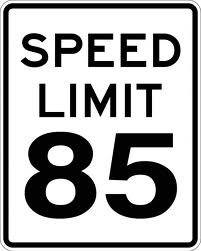Oops.
The privately operated section of the Texas 130 tollway south of Mustang Ridge is attracting about half the predicted traffic, according to Moody’s Investor Service, prompting it to investigate downgrading credit ratings for more than $1.1 billion in debt attached to the toll road.
[…]
TxDOT’s contract with the concession company lays out complex procedures to determine how much TxDOT would pay the concession company to take over the road in the event of a default or for any other reason. The Moody’s report doesn’t mention the possibility of default.
Chris Lippincott, a spokesman for the concession company, said it is meeting “contractual obligations to operate and maintain a world-class highway. We remain confident that the recently opened SH 130 … will benefit our investors and the people of Texas.”
The transportation commission — which has operational control of Texas 130’s northern 49 miles but not the Cintra-Zachry section — [approved on Thursday] cutting truck tolls by two-thirds for the next year on the tollway as well as on connecting toll road Texas 45 Southeast. Multi-axle trucks, beginning Monday, would pay the same tolls as passenger vehicles and pickups.
The concession company has agreed to charge all vehicles the car rate as well during that period. That means that a truck, rather than paying as much as $61 to travel the entire 90 miles of Texas 130, would pay just over $17. In both cases, those are the pay-by-mail rates. A truck equipped with an electronic toll tag would pay 25 percent less.
TxDOT, in announcing the toll reduction for big trucks, said it was done to ease congestion on parallel Interstate 35. But the change, which TxDOT estimates will reduce toll revenue on Texas 130 and Texas 45 Southeast by $11 million over the next year, also could introduce some truckers to the high-speed tollway. The speed limit is 80 mph on the TxDOT section and 85 mph on the Cintra-Zachry section.
So maybe this isn’t the pathway to prosperity that the city of Lockhart dreamed it would be, though it is good news for the hogs. Maybe it’s just that the idea of driving 85 MPH isn’t quite as appealing as we thought, at least not at these prices. Who knows? Let’s just hope TxDOT doesn’t get stuck holding the bag. The Trib notes a side issue relating to the speed limit on the service roads for SH 130, and EoW has more.


Honestly, the real problem with the road is that it’s not the least bit convenient. It theoretically runs from “San Antonio” to “Austin” but what it really does is run from a half hour east of San Antonio to half an hour north of Austin. From my house (north side of SA) it’s about two hours for me to get to Cedar Park when I visit friends. I looked at taking 130, if only to play with the 85mph, but it literally added an hour for my trip.
It services a very specific flow of traffic, which IMHO is coming from Houston and turning north past Austin to get to Dallas… but I have to think there are shorter, more direct routes for that. By the time you get to 130 you’re actually losing time even with the increased speed limit, and get to pay a very hefty toll for the privilege.
This may change as things go – 35 north of SA, through New Braunfels, is frequently backed up and unpleasant. At some point it may get bad enough to make the detour to get to 135 worth it… but I really, really doubt it. I generally try to give people the benefit of knowing their jobs, but whoever came up with this brilliant idea either screwed up badly, or made a lot of money in order to screw up badly.
130 is pretty much a classic “road to nowhere.” It was sold as a bypass around I-35 from north of Austin to San Antonio, but it ends at 10 east of Seguin, which is itself ENE of San Antonio – and which does absolutely nothing to get you around the fairly goofy San Antonio freeway network. On top of which, Google Maps still doesn’t show the toll segment (from around Bergstrom to Seguin) – that can’t help the traffic counts.
i think the attractiveness of this route was always predicated on it becoming part of a longer route (trans-texas). without that, this is a road from nowhere to nowhere.
The comments section here is an echo chamber.
Google Maps shows that Laredo to Dallas via I-35 the whole way is 6 hours, 24 minutes (430 miles). It also shows that Laredo to Dallas via TX130 is 6 hours, 25 minutes (446 miles), one minute longer. (Avoiding San Antonio altogether along I-410 and using TX130 adds only an additional 2 miles or an additional 2 minutes.)
And that’s in light traffic. For rush hour traffic, I would imagine the time savings at 30 minutes for a typical rush hour. I can’t say that’s worth $67, but maybe it is worth it for some drivers.
I’m not sure how people got the idea that this road was built for north SA trips to downtown Austin. It’s clearly not. It’s built for bypassing the densely populated parts of SA and Austin altogether – especially traffic from Mexico to Dallas and further north.
Pingback: Senate to tap that Rainy Day Fund – Off the Kuff
Pingback: More on that underutilized high speed toll road – Off the Kuff
Pingback: Building speculative privatized toll roads is risky business – Off the Kuff